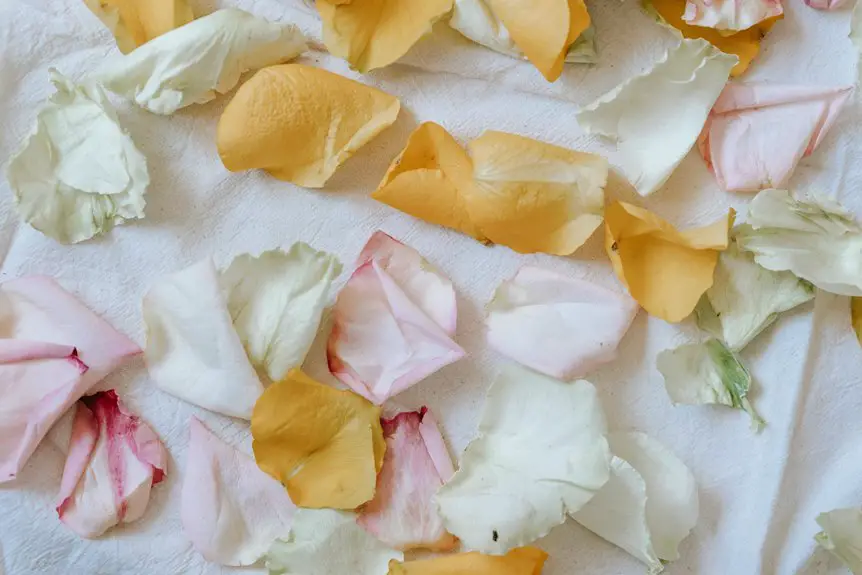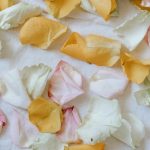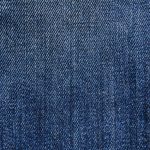You might mix up piqué and Lacoste fabric, but here’s the deal: piqué is a textured weave known for breathability and durability, while Lacoste is a brand that made piqué polo shirts famous. Piqué refers to the fabric’s structure, whereas Lacoste is tied to style and quality. Understanding this difference helps you pick polos that suit your lifestyle and taste. Keep exploring to uncover how this classic fabric and iconic brand truly stand apart.
Table of Contents
Key Takeaways
- Piqué is a weaving technique with a raised, textured pattern, while Lacoste is a brand that popularized piqué fabric in polo shirts.
- Piqué fabric emphasizes breathability and durability, ideal for active and warm-weather wear.
- Lacoste fabric offers a smoother, finer knit with a polished look for casual and smart-casual settings.
- The Lacoste brand introduced piqué polo shirts in the 1920s, blending function with style and adding a signature crocodile logo.
- Confusing piqué with Lacoste mixes fabric type with brand identity; fabric quality, not just branding, impacts comfort and style.
Understanding Piqué Fabric: Origins and Characteristics
Piqué fabric has a rich history that dates back to the 19th century, originally crafted in France for its unique texture and durability.
When you touch piqué, you’ll notice its raised, waffle-like pattern created through a weaving technique called double cloth or dobby weave. This texture not only adds visual interest but also improves breathability, making it ideal for warm weather.
Piqué’s raised, waffle-like texture enhances breathability and visual appeal, perfect for staying cool in warm weather.
You’ll find piqué is typically made from cotton or cotton blends, giving it softness and strength. If you’re choosing a fabric for polo shirts, dresses, or casual wear, piqué offers a lightweight feel with a sturdy finish.
It resists wrinkles and maintains shape well, so you won’t have to fuss over constant ironing. With piqué, you get both comfort and longevity in your garments.
The History Behind Lacoste Fabric
You’ll find Lacoste fabric has a rich history starting in the early 20th century when it was created for tennis apparel.
Over time, its unique knit and signature weave have evolved but stayed true to their sporty roots.
Let’s explore how these features set Lacoste apart from other fabrics like piqué.
Origins of Lacoste Fabric
The story behind Lacoste fabric begins in the early 20th century when tennis champion René Lacoste sought a comfortable, breathable material for his matches.
Frustrated with traditional tennis attire, which was often heavy and restrictive, he collaborated with textile experts to create a lightweight cotton fabric featuring a unique knit pattern.
This fabric enhanced airflow and moisture-wicking, keeping players cool and dry during intense play. You’ll recognize this fabric’s distinct textured surface, designed to provide both comfort and durability.
Lacoste’s innovation revolutionized sportswear by combining function with style, setting the foundation for the iconic polo shirts you see today.
Understanding this origin helps you appreciate why Lacoste fabric stands apart from similar textiles like piqué, rooted in performance and thoughtful design.
Evolution Over Time
Since its creation, Lacoste fabric has steadily evolved to meet changing needs and fashion trends. You’ll notice that what started as a breathable, durable material for tennis players has adapted to everyday fashion.
Originally designed for comfort and performance on the court, Lacoste fabric incorporated new fibers and finishes over time, enhancing softness, stretch, and moisture-wicking properties.
As casual wear gained popularity, the fabric’s versatility expanded, making it a staple beyond sports. You can now find Lacoste fabric in various weights and blends, catering to different climates and styles.
This evolution reflects how the fabric balances tradition with innovation, keeping it relevant without losing its classic appeal.
Signature Weave Characteristics
Lacoste fabric owes much of its unique appeal to its signature pique weave, which creates a textured surface that’s both breathable and durable.
When you wear Lacoste, you benefit from this distinctive structure that sets it apart from other fabrics.
Here’s what makes the pique weave special:
- Raised parallel cords or fine ribbing give it a subtle waffle-like texture.
- The weave allows air circulation, keeping you cool in warm weather.
- It enhances fabric strength, making garments last longer.
- The texture adds visual interest without compromising softness.
Key Differences Between Piqué and Lacoste Fabrics
Although you might hear the terms “piqué” and “Lacoste” used interchangeably, they actually refer to different aspects of fabric and style.
Piqué describes a specific weaving technique that creates a textured, raised pattern, often a waffle or honeycomb effect. Lacoste, meanwhile, is a brand known for popularizing the piqué weave in their polo shirts.
Piqué is a textured weave, while Lacoste is the brand that made piqué polos famous.
When you look at the fabric itself, piqué is all about the structure and feel—breathable, durable, and slightly heavier than plain knits.
Lacoste fabric, on the other hand, refers to piqué material combined with the brand’s design, quality standards, and logo.
How Lacoste Popularized the Piqué Polo Shirt
The iconic polo shirt you recognize today owes much of its popularity to a clever design innovation.
René Lacoste introduced the piqué fabric polo shirt in the 1920s, transforming tennis attire forever. You’ll notice how Lacoste’s version combined comfort, breathability, and style, making it perfect for sports and casual wear.
Here’s how Lacoste popularized it:
- Designed the shirt with breathable piqué fabric for better airflow.
- Added a soft collar that stayed flat without curling.
- Introduced the crocodile logo, creating a strong brand identity.
- Promoted the shirt in tennis tournaments, associating it with athletic excellence.
Thanks to these moves, you now have the classic polo shirt as a wardrobe staple.
Common Misconceptions About Piqué and Lacoste
You might think piqué and Lacoste are the same fabric, but they actually differ in texture and origin.
Many people confuse the term Lacoste with just the brand, not realizing it also refers to a specific knit style.
Understanding these differences helps you see how each fabric fits into fashion and everyday wear.
Fabric Texture Differences
Fabric texture often confuses many when distinguishing between Piqué and Lacoste materials. You might think they’re entirely different fabrics, but they actually share core characteristics. Here’s what you need to know:
- Both feature a waffle-like weave, giving them a textured surface.
- Piqué is the specific knit technique used to create that raised, patterned texture.
- Lacoste refers more to the brand popularizing the fabric, not a unique textile.
- The texture creates breathability and durability, ideal for polo shirts.
Understanding these points helps you see that the texture difference is more about terminology and branding than distinct fabric types.
Origin of Terms
Although many assume Piqué and Lacoste are completely different terms, their origins are closely linked and often misunderstood.
Piqué originally refers to a weaving technique characterized by raised parallel cords or fine ribbing. It’s a fabric style rather than a brand or specific garment.
Lacoste, on the other hand, is a brand name that popularized polo shirts made with this very piqué knit. When you hear “Lacoste fabric,” it’s actually referencing piqué material used in Lacoste’s iconic polos.
So, the confusion comes from associating Lacoste exclusively with piqué, but piqué itself exists beyond the brand. Knowing this helps you see that piqué is the fabric type, while Lacoste is the company that made piqué polo shirts famous.
You can appreciate the difference once you understand their true origins.
Usage in Fashion
When people talk about piqué and Lacoste in fashion, they often mix up the terms and their meanings. You might think Lacoste refers to a fabric, but it’s actually a brand famous for popularizing piqué fabric in polo shirts.
To clear things up:
- Piqué describes a specific knit fabric with a textured pattern, often used in sportswear.
- Lacoste is a brand that made piqué polo shirts iconic, but other brands use piqué too.
- Not all piqué fabric is associated with Lacoste, and Lacoste products might include other materials.
- Understanding this helps you appreciate fabric quality versus brand reputation when choosing clothing.
Choosing the Right Fabric for Your Polo Shirt Style
Since your polo shirt is a staple in many wardrobes, picking the right material can make all the difference in comfort and style.
Choosing the right polo shirt material transforms both comfort and style in your everyday wardrobe.
If you want breathability and a classic look, piqué fabric is a solid choice. Its textured weave allows air to flow, keeping you cool during warm days or workouts.
On the other hand, if you prefer a smoother, more refined feel, lacoste fabric offers a finer knit that drapes nicely for a polished appearance.
Consider your lifestyle—if you’re active, piqué’s durability suits you better. For casual or smart-casual occasions, lacoste adds elegance.
Also, pay attention to the weight; lighter fabrics work well in summer, while heavier ones provide structure.
Frequently Asked Questions
Can Piqué Fabric Be Used for Clothing Other Than Polo Shirts?
You can definitely use piqué fabric for more than polo shirts. It’s breathable, durable, and has a textured feel, making it great for dresses, skirts, casual shirts, and even lightweight jackets. Don’t hesitate to experiment!
Is Lacoste Fabric More Expensive Than Regular Piqué?
Lacoste fabric usually costs more than regular piqué because it’s a specific, branded type with higher quality standards. If you want durable, premium material, Lacoste’s price reflects that added value and craftsmanship.
How Do I Care for a Lacoste Piqué Shirt to Prevent Damage?
You should wash your Lacoste piqué shirt in cold water, use a gentle cycle, and avoid bleach. Don’t tumble dry it; instead, air dry to prevent damage. Iron on low heat if necessary, and store properly.
Are There Sustainable Options for Piqué or Lacoste Fabrics?
Did you know 60% of consumers prefer sustainable fabrics? You can find eco-friendly piqué made from organic cotton or recycled fibers. Look for brands committed to sustainability—they’re increasingly offering Lacoste-style fabrics with lower environmental impact.
Can Piqué Fabric Be Blended With Synthetic Materials?
Yes, you can blend piqué fabric with synthetic materials like polyester or spandex. This mix improves durability, stretch, and moisture-wicking, making your garment more comfortable and long-lasting while retaining piqué’s textured look.







